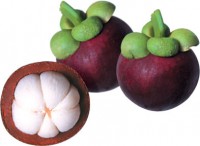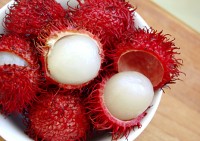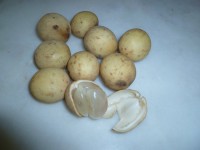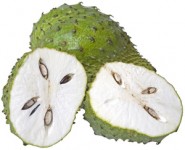8 fruits you must sample in Malaysia
Much has been said about the wonderful Malaysian Food; one thing though is often overlooked and that is the superb harvest of tropical fruits that the Malaysian soil yields. Refreshing, succulent, some with flavours to send you into bliss, these fruits make the delightful cherry atop the local cuisine cake. While some fruits are seasonal many others are available throughout the year. So, no matter when you visit, you will certainly have a chance to dig into something juicy and yummy!
Durian
 There is a valid reason for calling this the “king of Fruits”. Its distinctive fragrance sees to it that only the adventurous dare to try it. The reward for this bravery though is amazing . The thorny husk house seeds covered in a flesh that defies all description – creamy, pungent, malty sweet, overpowering! There are many varieties such as the Raja Kunyit, Red Prawn, Musang King, Bamboo Foot, D101, D24 and more, with the hybrids especially fetching a high price. The durian simply must be be savoured to be understood.
There is a valid reason for calling this the “king of Fruits”. Its distinctive fragrance sees to it that only the adventurous dare to try it. The reward for this bravery though is amazing . The thorny husk house seeds covered in a flesh that defies all description – creamy, pungent, malty sweet, overpowering! There are many varieties such as the Raja Kunyit, Red Prawn, Musang King, Bamboo Foot, D101, D24 and more, with the hybrids especially fetching a high price. The durian simply must be be savoured to be understood.
Mangosteen
 There are those who wait eagerly all year for a basketful of this “queen of Fruit”. This seasonal fruit is loved for its absolutely delicious, sweet yet slightly acidic flavour. It is about the size of a tennis ball with a firm rind, which turns crimson as it ripens. The five or so slices of white flesh inside are juicy with a little fibre. Watch out for the rind’s purple stain which leaves a permanent mark on your clothes.
There are those who wait eagerly all year for a basketful of this “queen of Fruit”. This seasonal fruit is loved for its absolutely delicious, sweet yet slightly acidic flavour. It is about the size of a tennis ball with a firm rind, which turns crimson as it ripens. The five or so slices of white flesh inside are juicy with a little fibre. Watch out for the rind’s purple stain which leaves a permanent mark on your clothes.
Rambutan
Common to South East Asia and a huge favourite with most locals and anyone else who bites into it, this fruits does come across as strange looking to one who is unfamiliar with it. The rambutan, which typically means “hairy” looks exactly like its namesake – furry, and ranges from yellow to a bright, gorgeous red. Don’t be put off by its lack of a fragrance when peel open, the translucent seeded flesh within is an absolute delight. It is available seasonally at roadside stalls as well as at market places.
Starfruit
 The starfruit looks as pretty as it sounds. Shaped like a star when sliced, its clear to yellow flesh is soft, juciy and sweet when ripe. Some of the greener fruits can be a little sour, but many people enjoy it with a tiny sprinkle of salt – the resulting combination of sour and salty is a piquant delight. Eaten both fresh and juiced, the starfruit is believed to lower blood pressure.
The starfruit looks as pretty as it sounds. Shaped like a star when sliced, its clear to yellow flesh is soft, juciy and sweet when ripe. Some of the greener fruits can be a little sour, but many people enjoy it with a tiny sprinkle of salt – the resulting combination of sour and salty is a piquant delight. Eaten both fresh and juiced, the starfruit is believed to lower blood pressure.
Jackfruit
 The strong fragrance of the jackfruit hits you even before you see the actual fruit! This huge compound fruit contains dozen of little seeds in pockets of sweet and slightly crunchy flesh. Locals who know better than to throw the seeds away, steam or cook them in gravy. A close cousin of the jackfruit is the cempedak. Its sweet pulp is coated in a batter and deep fried; often it can be found alongside the “Pisang Goreng” (Fried Banana) at stalls.
The strong fragrance of the jackfruit hits you even before you see the actual fruit! This huge compound fruit contains dozen of little seeds in pockets of sweet and slightly crunchy flesh. Locals who know better than to throw the seeds away, steam or cook them in gravy. A close cousin of the jackfruit is the cempedak. Its sweet pulp is coated in a batter and deep fried; often it can be found alongside the “Pisang Goreng” (Fried Banana) at stalls.
Langsat & Duku
 Just a little smaller than a golf ball, the langsat has a soft, golden brown skin and comes in clusters. It has about five slices of translucent flesh within, which also come with extremely bitter seeds that must be avoided. Some fruits carry a somewhat acidic taste while others are sweet. Related to its is the slightly larger duku which as a harder skin and flesh that has a refreshingly tangy sweetness.
Just a little smaller than a golf ball, the langsat has a soft, golden brown skin and comes in clusters. It has about five slices of translucent flesh within, which also come with extremely bitter seeds that must be avoided. Some fruits carry a somewhat acidic taste while others are sweet. Related to its is the slightly larger duku which as a harder skin and flesh that has a refreshingly tangy sweetness.
Ciku
 It can be easily mistaken for the Kiwi fruit but the ciku however, is far sweeter in a malty sort of way that reminds you of caramel or toffee. Its colour ranges from yellowish to brown with a texture that is granulated and akin to a pear. The fruit’s sweetness is considered to be an excellent source of energy.
It can be easily mistaken for the Kiwi fruit but the ciku however, is far sweeter in a malty sort of way that reminds you of caramel or toffee. Its colour ranges from yellowish to brown with a texture that is granulated and akin to a pear. The fruit’s sweetness is considered to be an excellent source of energy.
Soursop
 Sweet, sour and creamy, the soursop which is also known as Custard Apple is all that and more. Known to be a cancer deterrent, this lovely fruit is soft on the inside as it is prickly on the outside. It is eaten raw, made into juice and these days, even ice-cream flavouring. The soursop can’t be found as commonly as the rest mentioned here, so if you spot one, make sure to grab it!
Sweet, sour and creamy, the soursop which is also known as Custard Apple is all that and more. Known to be a cancer deterrent, this lovely fruit is soft on the inside as it is prickly on the outside. It is eaten raw, made into juice and these days, even ice-cream flavouring. The soursop can’t be found as commonly as the rest mentioned here, so if you spot one, make sure to grab it!